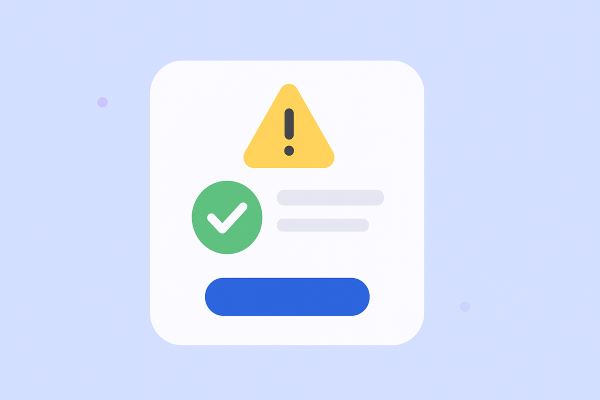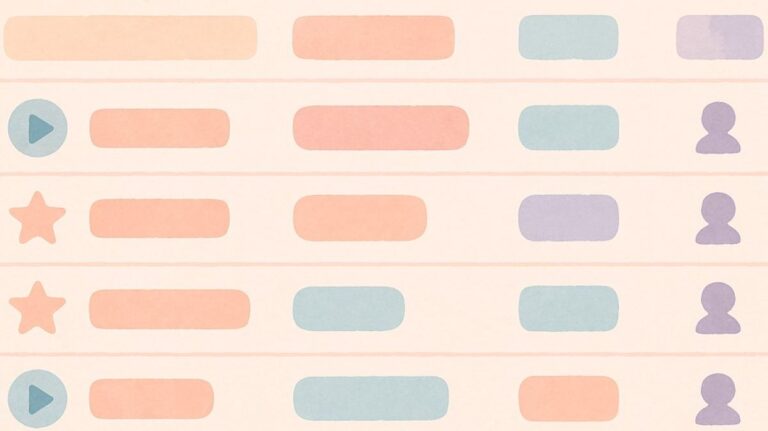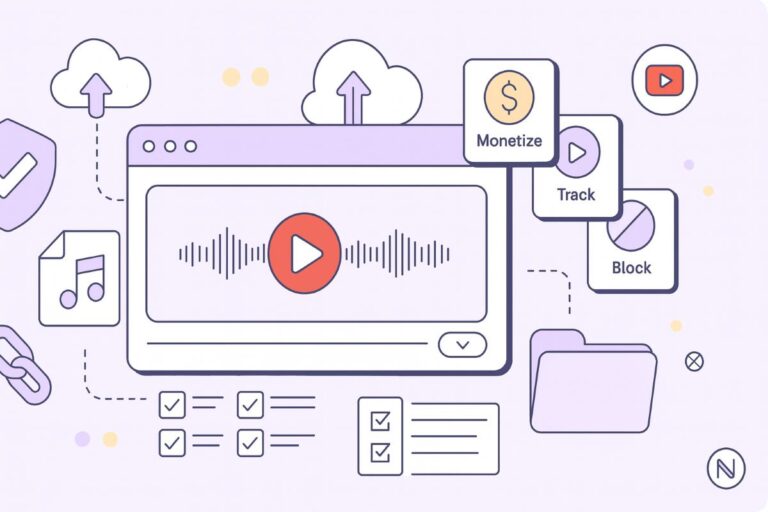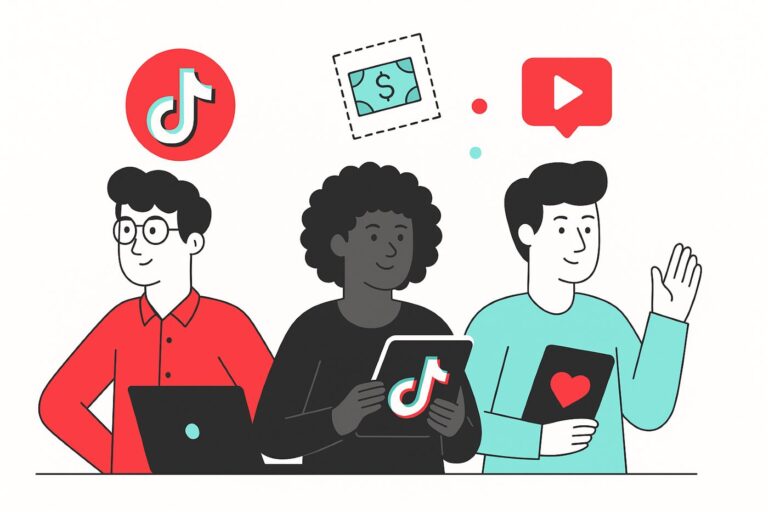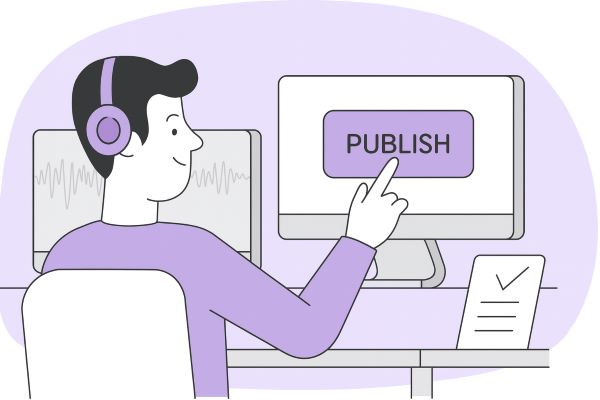The Beginner’s Guide to Mechanical License
Audiodrome is a royalty-free music platform designed specifically for content creators who need affordable, high-quality background music for videos, podcasts, social media, and commercial projects. Unlike subscription-only services, Audiodrome offers both free tracks and simple one-time licensing with full commercial rights, including DMCA-safe use on YouTube, Instagram, and TikTok. All music is original, professionally produced, and PRO-free, ensuring zero copyright claims. It’s ideal for YouTubers, freelancers, marketers, and anyone looking for budget-friendly audio that’s safe to monetize.
Every time a track moves from studio to shelf, drive, or playlist, one right stands between you and a copyright claim: the mechanical license. Lock it in before you press vinyl, upload a download, or drop that hit on Spotify, and the composer keeps earning while your release stays live.
What Is a Mechanical License?
A mechanical license gives you legal permission to copy and distribute a song’s underlying composition. The term dates to player-piano rolls that punched notes into paper, a “mechanical” method that now covers vinyl, CDs, downloads, and on-demand streams.

This license funnels money to songwriters. Each time you press discs, sell downloads, or log streams, you owe a royalty. In the United States that payment follows a statutory rate, which keeps accounting clear for creators, publishers, and platforms.
Record a Swift cover for your album and you step into mechanical territory. Before pressing discs, uploading to stores, or sending tracks to apps, secure the license and pay the per-copy fee. That step respects the writer and shields your release from claims.
What It Covers
Mechanical rights first attach to audio-only copies you can hold or download. Pressing vinyl, burning CDs, duplicating cassettes, or selling MP3, WAV, or FLAC files all reproduce the composition, so each unit owes the songwriter a set royalty. Karaoke albums and ringtone snippets fall into the same rule because listeners acquire standalone audio.

Interactive streaming keeps charging these royalties in bite-sized pieces. When a listener taps a song on Spotify, Apple Music, or Deezer, the service stores and plays a unique copy. Every on-demand play sends a fraction of subscription or ad revenue to the publishing side, building a steady income stream for writers and publishers.
DIY distributors such as DistroKid or TuneCore push cover tracks to dozens of stores. Each territory has its own mechanical rules, so uploaders must secure licenses for every region they select. No license, no distribution.
Who Grants a Mechanical License?
Songwriters and publishers control mechanical rights. When writers sign with a publisher, that office handles licensing. Artists who plan to press covers or sample tracks contact the publisher, log each use, and clear rights before manufacturing or uploading.
HFA and Music Reports streamline U.S. clearances. Each agency represents thousands of publishers and issues blanket or title-specific licenses online. Pay the statutory fee, download your certificate, and move to the next track without back-and-forth emails.

Outside the United States, collection societies such as MCPS-PRS in the United Kingdom, SACEM in France, and GEMA in Germany perform the same job. Register your release, pay local rates, and those societies route royalties to songwriters while keeping global distribution compliant.
Who Needs a Mechanical License?
Artists who release cover songs need a mechanical license before pressing CDs, vinyl, or digital uploads. Record labels rely on the same license when they manufacture albums. Without it, copying a songwriter’s melody becomes infringement and stops any distribution plan.

Producers sample existing compositions daily, so they clear mechanical rights for loops and stems. Streaming giants such as Spotify and Apple Music act at scale, paying songwriters a royalty each time listeners hit play on an interactive stream.
Karaoke companies, game studios, and toy makers license music when their products reproduce a tune. Any business that stores or ships a song for customers needs mechanical permission first. Secure it and the project moves forward without legal headaches.
Do you need a mechanical license?
Answer four quick questions about your project. We’ll tell you, in plain English, if you must secure a mechanical license, and what to do next. This quiz assumes the song you’re using is not in the public domain.
Do I Need a Mechanical License?
When You Must Secure It
Pressing copies or uploading tracks starts the clock on licensing. Before a single CD drops off the production line or a WAV file hits a distributor’s server, the songwriter’s mechanical right already applies. Clearing it in advance keeps orders moving and revenue flowing.
Manufacturing plants, download stores, and streaming aggregators now ask for proof of clearance up front. They review certificates from agencies such as HFA, Music Reports, or local collection societies and refuse projects that lack them. This gatekeeping protects writers and shields factories from secondary liability.

Secure the license, pay the statutory rate, and file the receipt with your project docs. Delivery crews can then press discs, encode files, and push release dates without last-minute legal delays.
How Money Flows
United States law sets clear mechanical rates. Press a CD or sell a permanent download and you owe 9.1 cents per song, or 1.75 cents per minute if the track runs long. A ringtone costs 24 cents because each alert counts as a separate copy. These fixed numbers guarantee writers a slice of every physical or digital unit and let labels budget without haggling.

Streaming splits money differently. Spotify and Apple Music dump all revenue into one pot and divide it by share of plays. A song with one percent of streams receives one percent of the pot, and the service passes a piece of that to the writer as a mechanical royalty. Deezer’s user-centric trials send each subscriber’s fee only to tracks they play, which may boost niche catalogs. Writers say these systems pay them less than labels collect.
Every license sets a payment calendar. Many publishers want monthly or quarterly reports. You count units, multiply by the rate, and send both figures and money on time. Miss a deadline and you risk losing the license plus legal claims. Timely accounting keeps projects alive and honors songwriters.
Who Oversees Mechanical Licensing in the U.S.?
The Mechanical Licensing Collective (MLC)
The MLC is a government-designated nonprofit that administers blanket mechanical licenses for digital audio services in the U.S. If you’re a songwriter or publisher, they collect and distribute your mechanical royalties from platforms like Spotify or Apple Music. This setup was introduced under the Music Modernization Act (MMA) to streamline how digital services handle mechanical payments.

U.S. Copyright Office
The Copyright Office defines statutory rates and manages the compulsory licensing process. Under these laws, once a song has been released publicly, anyone can legally cover or reproduce it, as long as they pay the statutory rate.
The Office’s role is to ensure the law remains fair for both creators and those who want to use the music. They handle ongoing policy work and updates, crucial in an era of rapid changes in streaming and digital media.
Outside the U.S., you’ll find organizations like PRS for Music in the UK, SACEM in France, and GEMA in Germany managing mechanical rights and distributing royalties to local songwriters. While each territory sets its own rules, the underlying goal stays the same: ensure composers are paid whenever their music is copied or distributed.
Key Components of a Mechanical License
All these components work together to make sure that when you reproduce a song, everyone’s on the same page. The songwriters get their fair share, while you get the freedom to use their work as planned.
Grant of Rights
First up is the Grant of Rights. This part basically says, “Hey, you have permission to reproduce and distribute this composition.” It also lists which formats you can use – CDs, digital downloads, or streaming.

Territory
Next is the Territory clause. Some licenses are limited to one country, like the U.S., while others cover broader regions, such as the European Union. So if you plan to sell or distribute your music internationally, you’ll want to make sure the license covers all those areas.

Duration
Then there’s the Duration section. This indicates the duration of the license’s validity. Some licenses might be set for a specific period or even require yearly renewals if you continue paying royalties. Others might give you rights in perpetuity, meaning you can keep using the song without reapplying.
.jpg)
Royalties
Speaking of royalties, the Royalty Rates part is crucial. For example, in the U.S., there’s a statutory rate – often about $0.091 per physical copy or download, though ringtones might be higher. If you’re planning a big release, those per-copy fees can really add up.

Usage Details
The Usage Details clarify exactly how you’re allowed to use the music. For digital downloads, streaming platforms, or any other use, this section spells out your rights. Payment Terms then lay out when and how you pay those royalties – monthly, quarterly, and so on, and often require you to send in reports about sales or streams so that publishers can keep everything in check.
Artist Attribution
Sometimes you’ll also see a note on Artist Attribution, which means you have to credit the songwriter and publisher. Just a little nod to ensure everyone gets the recognition they deserve. It’s important to remember that a mechanical license doesn’t cover public performance rights – that’s a whole different ballgame handled by groups like ASCAP or BMI.
Exclusivity
Finally, most mechanical licenses are non-exclusive, so the publisher can license the same song to other artists, and you’ll usually find sections on Warranties and Indemnifications that protect both parties if any legal disputes pop up.

Optional Clauses
Sometimes, a mechanical license includes extra terms beyond the basics – little add-ons that help clear up details and protect both sides. Here are two common optional clauses:
Advances
An advance is an upfront payment you make to the publisher before you start distributing the track. The agreement usually explains how that advance will be recouped. Essentially, you pay a set amount up front, and then future royalties are deducted from that sum until it’s fully paid back. This clause gives the publisher some financial security and ensures that both parties are on the same page from the get-go.
Digital Use Controls
This clause outlines specific guidelines for uploading or storing the music digitally. It might cover how to display metadata or artwork, and it often spells out who is responsible for handling these details. By setting clear rules for digital use, this clause can help avoid any confusion when you launch your music on platforms like Spotify or Apple Music.
Not every mechanical license will include these extra details – many stick to the core terms. But if you’re planning to distribute music on large digital platforms or using an advance payment, these optional clauses can save you from unexpected surprises down the line.
What a Mechanical License Does NOT Cover
Public performances use a different right. When radio spins a track, a bar hosts live music, or TV airs a concert, the venue pays ASCAP, BMI, or another PRO. Those societies send performance royalties to songwriters and publishers.

Sync licensing governs music matched with visuals. Filmmakers, game studios, and YouTubers must obtain clearance from a publisher and a master license from a label before rolling cameras or uploading content. A mechanical license alone never covers this visual pairing.
Master recording rights sit with whoever owns the tape, usually a label. If you sample or distribute that recording, you must secure a master use license along with mechanical clearance for the song. Handling each layer correctly keeps releases free of disputes.
How Mechanical Licensing Works in the Digital World
Digital services copy songs every time a user pulls a file or stream on demand. Each copy is a “digital phonorecord delivery,” so the songwriter earns a mechanical royalty just as if you pressed a disc. Skipping this step means unpaid writers and a strong chance of takedowns.
Buying a permanent download from stores such as iTunes or Beatport creates a lasting file on the listener’s drive. That one-to-one transfer triggers the full statutory rate for every song sold.
Some apps let subscribers save albums for offline listening. Each cached file lives on the device and counts as a temporary download, so platforms still owe mechanical royalties on that stash.
Interactive streaming (picking any track on Spotify, Apple Music, or Tidal) copies tiny chunks into memory and storage while it plays. Lawmakers treat those fragments as reproductions, and the service pays a fractional mechanical royalty for every play.

Karaoke services and tab apps often preload full backing tracks so sessions start instantly. Because those tracks sit on servers and devices, each preload needs mechanical clearance before the company pushes updates.
Cloud lockers that scan local libraries and deliver matched files host replacement copies on their own servers. Each matched file is a fresh reproduction, so the locker service must license the composition and report plays back to publishing societies.
When Does a Mechanical License Enter the Picture?
YouTubers & Vloggers
Most creators on YouTube marry music to visuals (intro stings, background loops, highlight montages) and then publish the finished video for streaming on demand. Because the audio never leaves the video container, that is a classic sync use.
A mechanical license only surfaces if you detach the soundtrack and distribute it as a stand-alone audio file – perhaps as a “lo-fi study playlist” on Spotify or a Bandcamp bonus download. Until that happens, no mechanical royalties accrue.
Secure a sync license for the composition plus a master license for the recording. Add a mechanical license later if you release an audio-only version of the track or soundtrack.
Live Streamers
Twitch or Kick broadcasters often spin royalty-free tracks behind live commentary or gameplay. Those performances flow in real time and count as public performances rather than reproductions. Archived VODs still embed the music in video, so sync covers them.
A mechanical obligation only appears if you provide downloadable audio clips or highlight reels stripped of visuals. Interactive live streams and VODs on the same platform do not trigger it by default.
Hold a platform performance blanket where available, confirm sync clearance for any prerecorded music, and add a mechanical license only when you allow audio-only downloads.
Social-Media Advertisers
Short, punchy promos on Instagram, Facebook, or TikTok pair moving images with a catchy riff. They are pure audiovisual works, so the sync right is front and center. Some libraries charge extra for paid ad placements, but mechanical rights are not part of the equation because viewers never receive an extractable audio file.
Since no reproduction or distribution of audio-only content occurs, mechanical royalties do not apply.
Secure a sync license that explicitly grants paid-media usage on every intended platform and, if needed, an upgraded master license that covers large ad spends.
Podcasters
A podcast episode ships as an MP3 inside an RSS feed. Listeners stream or download that file for keeps, which counts as a digital phonorecord delivery. Each embedded song therefore triggers the mechanical right alongside the master.
The industry often labels this bundle a “podcast license,” but under copyright law it remains a custom mechanical clearance. Without it, hosts risk takedowns and unpaid writer royalties.
Obtain a mechanical license for every musical composition you include, plus the master right for the recording. Keep copies of receipts or letters of direction to satisfy distributors and sponsors.
Educators & Course Creators
Video lessons with background music live in the sync realm because students watch the lecture slides or screen-share alongside the track. By contrast, downloadable audio lectures, language drills, or meditation tracks are audio-only products. Those copies trigger mechanical royalties for each composition.
You might teach Photoshop or psychology – the key factor is the final file type your learners can keep.
For video modules, clear sync and master rights. For downloadable audio lessons, add a mechanical license and report usage to the relevant collection society or publisher.
Feature Films & TV Episodes
During post-production, you lock songs to picture, which is pure sync territory. The finished movie or series streams or screens with music embedded, so no mechanical license arises. When the studio later releases a soundtrack album, streaming or physical, that album is an audio-only product, and every cue now needs mechanical clearance.
In short: the film needs sync and master licenses; the soundtrack needs mechanical licenses as well.
Negotiate sync and master rights for the on-screen use first, then line up mechanical licenses for each track destined for the soundtrack release.
Radio & Non-Interactive Web Radio
Terrestrial radio and lean-back internet stations play music linearly without on-demand rewind. Because listeners cannot choose or download tracks, no reproduction occurs. Stations, therefore, pay only public-performance royalties through blanket deals with PROs like ASCAP, BMI, or PRS.
Mechanical rights are outside this broadcast model.
Ensure the station holds current PRO blankets; individual shows do not need separate mechanical or sync licenses for standard airplay.
Broadcast TV & Cable Advertising
Commercial spots combine visuals, voice-over, and licensed music, airing on fixed schedules over cable or terrestrial channels. The ad itself is an audiovisual work, so sync plus master rights cover the music. Networks pay public-performance royalties under existing PRO agreements.
Because viewers cannot download the jingle as a stand-alone track, no mechanical license is due.
Confirm that your sync and master licenses permit broadcast advertising across all territories and that cue sheets are filed so writers receive performance royalties.
Audiobooks
Narrated titles often layer gentle beds or scene-transition cues beneath the voice-over. The final deliverable is a downloadable audio file distributed by Audible, Libro.fm, or on CD. That distribution reproduces the composition, invoking the mechanical right.
Even short musical snippets can trigger this obligation if they exceed fair-use limits.
Secure a mechanical license for each piece of music and the matching master right. Keep licenses on file in case digital platforms request documentary proof during content ingestion.
Challenges and Trends in Mechanical Licensing
The music industry has definitely transformed over the past few decades, and that shift has touched mechanical licenses, too. Remember when CDs ruled the world?
Now, most people stream their favorite songs on platforms like Spotify or Apple Music, which means royalty collection is a whole different ball game. Instead of collecting a fee for every physical copy sold, publishers and agencies now have to track and manage payments for each digital play.
This pie chart illustrates the distribution of mechanical licensing revenue, with streaming contributing the largest share (45%), followed by physical copies (30%) and digital downloads (25%).

Take licensing agencies like the Harry Fox Agency (HFA), for example. They’ve adapted to our digital age by offering services that track how often a song is streamed and help manage payments from these new platforms. This means that even though physical sales have dropped, songwriters and publishers can still get a fair cut from digital plays.
Quick Check Before You Hit Publish
You’ve made it through the deep dive, but maybe you’re still hesitating – Does my cover EP need paperwork? What about that download-only language course I’m dropping next month? Instead of guessing, run your project through our Music License Wizard.
Music License Wizard
Embed This Tool on Your Website


Audiodrome was created by professionals with deep roots in video marketing, product launches, and music production. After years of dealing with confusing licenses, inconsistent music quality, and copyright issues, we set out to build a platform that creators could actually trust.
Every piece of content we publish is based on real-world experience, industry insights, and a commitment to helping creators make smart, confident decisions about music licensing.










